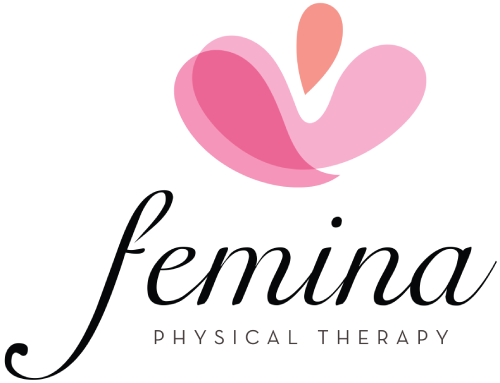
Myofascial release therapy is an effective approach for addressing various pain-related issues. By focusing on reducing tension in the fascia, a type of connective tissue that surrounds the muscles, this therapeutic method has gained popularity for its ability to improve well-being. Fascia can be thought of as a web that holds everything together; when it tightens or becomes damaged, discomfort and pain may result. Myofascial release provides relief by relaxing and loosening the fascia, leading to smoother movements and less pain.
People often seek myofascial release therapy for pain relief, especially in cases involving stubborn trigger points. These are often likened to knots in the muscle tissues and can create a sore feeling that interferes with everyday activities. Addressing these trigger points is key to experiencing the full benefits of the therapy. With targeted techniques aimed at alleviating these specific areas, individuals often find significant relief, making myofascial release therapy a valuable tool in their pain management toolkit.
Understanding Trigger Points
Trigger points are small, localized areas within muscles that can cause significant discomfort. They are often described as sensitive spots, sometimes referred to as knots, that form due to muscle overuse, stress, or injury. These points act like traffic jams in the muscle fibers, with a build-up of tension that needs to be released. Understanding how these develop is the first step in addressing them effectively.
Typically, trigger points arise when muscles are subjected to repetitive strain or poor posture. For example, sitting at a desk for long periods with little movement can lead to small tears or inflammation in the muscle fibers. As these persist, they form tight knots that can cause sharp, aching pains that may even radiate to other parts of the body. Common symptoms include headaches, neck pain, and lower back pain, which are often linked to trigger point activity.
Recognizing the hallmark signs of trigger points is crucial for tackling these issues. Stiffness in the affected area, limited movement, and persistent muscle soreness are tell-tale signs. This awareness helps in seeking appropriate treatment methods, such as myofascial release therapy, that directly target these points, offering a path to relief and improved muscle function.
How Myofascial Release Therapy Works
Myofascial release therapy is all about relaxing tight muscles and releasing trigger points. It focuses on hands-on techniques to stretch and manipulate the fascia and the underlying muscle tissues. This therapy involves applying gentle, sustained pressure on the myofascial tissue to unlock any tightness and ease tension in the affected areas.
Therapists use their hands to identify and work on areas of tension. They slowly stretch and apply pressure, giving the fascia time to relax and stretch, helping to restore normal movement. Sometimes, tools like foam rollers or balls may supplement hands-on techniques for deeper pressure on the trigger points. Over time, this consistent treatment can lead to decreased pain and improved mobility.
The effects on muscle tissue and fascia are significant. As the fascia relaxes, blood flow improves, allowing nutrients to reach previously restricted areas. This process not only alleviates pain but also enhances the body’s natural capacity for healing and repair. As the fascia becomes more flexible, it often translates to better overall movement and function.
Benefits of Myofascial Release Therapy
Many people find this therapy offers a range of benefits beyond just alleviating pain. Here’s a quick look at what you might expect:
– Pain Reduction: Regular sessions can significantly reduce chronic pain, whether from past injuries or everyday strain.
– Improved Mobility: With less tension and more flexible fascia, people often find they move more freely and easily.
– Better Circulation: As the fascia relaxes, blood flow increases, supporting overall health and healing.
– Reduced Muscle Tension: Regular therapy can lead to more relaxed muscles, minimizing the risk of future injuries.
What to Expect During a Session
A typical session begins with an assessment, where the therapist identifies areas that need attention. Depending on individual needs, each session might differ slightly, but the overall process remains quite consistent.
1. Assessment: The therapist takes note of your problem areas and may ask questions about any pain or stiffness you’ve experienced lately.
2. Warm-Up: Some light stretching or gentle exercises may be involved to prepare your body for the therapy.
3. Hands-On Treatment: Using their hands, and sometimes tools, therapists apply pressure and stretch the targeted areas.
4. Follow-Up: At the end, they’ll likely give feedback on what they discovered and often provide tips for maintaining benefits between sessions.
In preparing for a session, wearing comfortable and loose-fitting clothing is advisable. This not only makes it easier for the therapist to work but also ensures you feel relaxed throughout the process.
Finding the Right Therapist in Los Angeles
When seeking a therapist, it’s important to find someone qualified and experienced. Look for therapists who have certifications and positive reviews that speak to their expertise. Experience in myofascial release techniques can greatly influence the effectiveness of the treatment.
Understanding a therapist’s qualifications and having open discussions about your concerns can offer peace of mind. Trusting your therapist plays a large part in how comfortable you’ll feel during the sessions, which can influence the outcome of the therapy.
Choosing the right therapist involves recognizing the importance of the credentials and experience they bring. This not only ensures safe and effective treatment but also enhances your therapy journey, setting a solid foundation for achieving desired results.
Ready to tackle pain and enhance your well-being? Consider incorporating myofascial release therapy at Femina for effective relief and improved mobility. Explore personalized treatment options and take the first step on your journey to healing and comfort. We have both physical therapists and massage therapists trained in myofascial release, and work together to provide comprehensive and individualized care.
